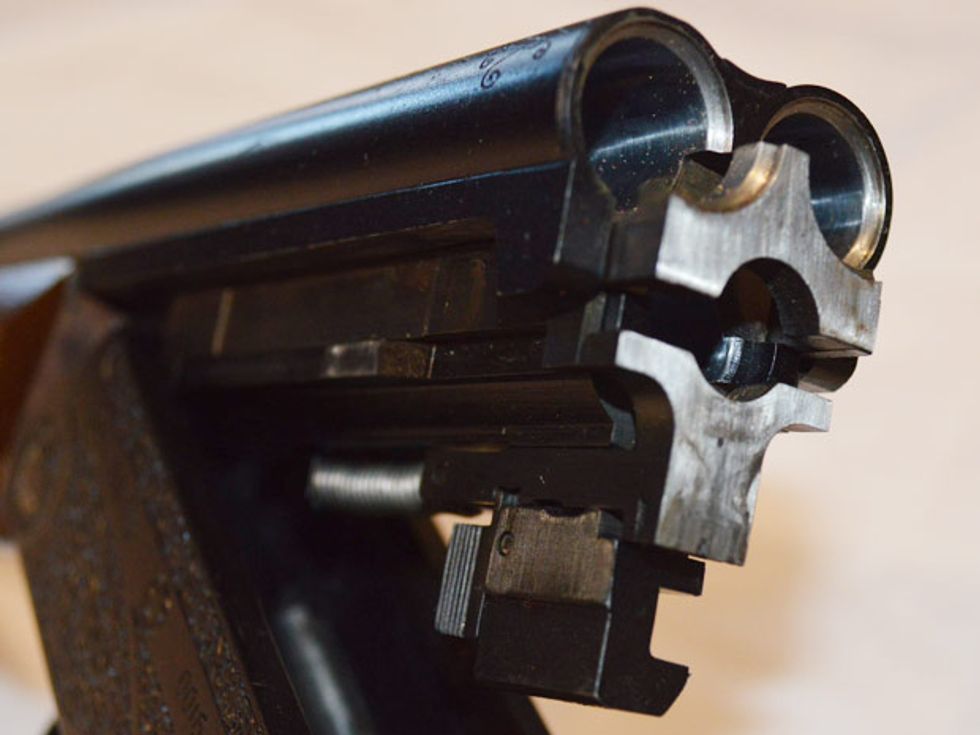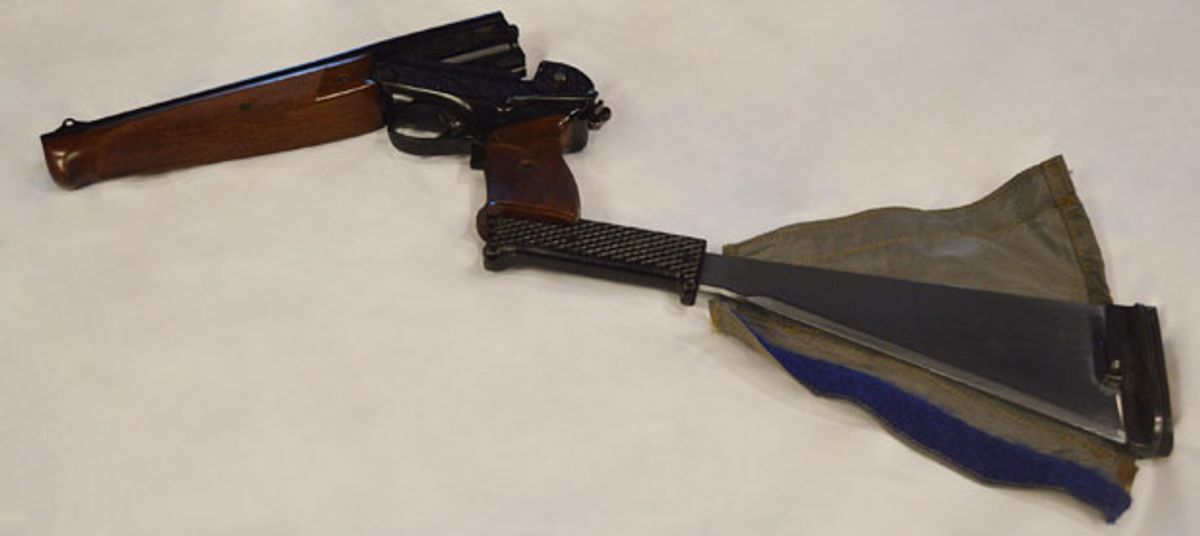Since the dawn of the Space Age, diplomats and their legal staffs have wrestled with the challenge of constraining the use of space for overtly militaristic purposes, especially as a stage for deploying or actually using weapons.
They made well-paid careers of negotiating and signing “Outer Space Treaties,” despite the lack of generally accepted definitions of “space” or “weapon,” or even an inkling about how compliance with any such treaty would be monitored or enforced. Such practical angles were supposedly best left to the engineers to figure out later.
And all the time, various prototype weapons were tested, sometimes deployed, then usually discovered to be useless, and were scrapped. A lot of engineers were well-paid for such careers, too.
For decades, the one exception to this sequence was the little-known Russian practice of packing sidearms on space stations. This continued into the International Space Station partnership, in the form of a “survival gun” in the emergency kit of every Soyuz crew vehicle. Treaty negotiators made sure to grandfather-in such pre-existing weapons—and the Russians were the only ones that had them.
But where the lawyers and diplomats couldn’t get the weapon banned, one pushy space engineer may have done the trick. Without any official declaration from Moscow or Houston, a few years ago the rumor began to spread: “The guns are gone.”
Maybe I deserve some of the credit. For years I was needling and teasing the Russians about the presence of the guns while they were campaigning for no other weapons in space. I expressed this in various articles I’ve had published and in interviews I’ve given. Both space programs kept mum about the issue, but I kept raising it and knocking the scab off.
For decades, the standard Soyuz survival pack included a deluxe all-in-one pistol called the TOZ 82 with three barrels and a folding stock that doubled as a shovel and contained a swing-out machete. There were a few dozen rounds of three types of ammunition—rifle bullets, shotgun shells and flares—in a belt attached to the gun.
In the early years of the ISS, NASA astronauts also trained with the TOZ 82. Familiarization usually took place during survival training in the Black Sea, when the crews trained to safely exit a spacecraft floating on the water. After floating around in the water for a day or two, the astronauts and cosmonauts would take a few hours to fire several rounds from each chamber off the deck of the training ship.
“It was amazing how many wine, beer and vodka bottles the crew of the ship could come up with for us to shoot at,” astronaut Jim Voss, who spent a stint aboard the international space station in 2001, told me. “It was very accurate,” he continued. “We threw the bottles as far as possible, probably 20 or 30 meters, then shot them. It was trivial to hit the bottles with the shotgun shells, and relatively easy to hit them with the rifle bullets on the first shot.”
Astronaut Dave Wolf, who spent four months aboard Russia's Mir space station in 1997-98, agreed that the space weapon was “a wonderful gun.” He added, “I found it to be well-balanced, highly accurate and convenient to use.”
Mike Foale, the only astronaut who served aboard both Mir and the international space station, trained with the gun and found it to be pretty standard. “Other than firing flares, birdshot and a hard slug from its three barrels, during sea and winter survival training, I can’t say it is very unique,” he told me. He added, as if in reassurance, “The Soyuz commander controls its use.”

But NASA never released any photos of their people in such training. The only weapons-training photographs ever released are on the Web sites of two private spaceflight participants, South Africa's Mark Shuttleworth and Iranian-American entrepreneur Anoushah Ansari, both multimillionaires—and both of whom have posed for a photo with the gun in their hands.
Of course, plans were to use it only in special circumstances on return to Earth. But in space, on occasion, well-laid plans have a way of turning out very differently. In my publicity campaign, I suggested the presence of the gun, especially in light of recent space team psychological problems, might be an invitation to a future disaster.
Fiendishly, I proposed that to guarantee the gun only be usable in an off-course landing (its official purpose), it be stashed in compartment accessible only from outside the Soyuz, after landing. There never was any response to my helpful suggestions.
But something did happen—or rather, stopped happening. Last year I was told by a NASA press official—not for attribution, of course—that the gun had been removed from the standard survival kits and I should ask the Russian Space Agency for confirmation. As usual, the Russian Space Agency never responded to my queries.
So I asked the cosmonauts. During a press conference last summer in Houston, the team for the Soyuz launch in October was made available for one-on-one interviews with journalists, and I always attend. There were so many entrancing mission-specific technical questions that I ran out of time without getting to my 3x5 card marked “GUN??” They were whisked out of the conference room.
All was not lost. I rushed outside, as the two cosmonauts stood with their interpreter before walking back to the astronaut office. “One more question, please,” I pleaded, in Russian. “The pistol in the emergency kit, do you still carry it?”
They had enjoyed my earlier questions and so seemed generously disposed towards me, and smiled. “Ransheh,” answered the commander, amused. “Earlier”—adding that the old practice had been suspended a few years before, after his own first mission. As to why, he merely shrugged his shoulders and grinned.
Fortunately, I remembered the question two months later when I interviewed the next crew. And their answers threw the whole issue into a totally new light.
Italian astronaut Samantha Cristoforetti had been preparing to launch to the ISS late this month, and when I asked her recently about the space gun, she laughed and replied, “Well, I have a really good story about the gun.”
As she related it to me, at her final oral exams in Moscow she was asked to list the contents of the Soyuz emergency landing survival kit. She wrote them on the chalk board in front of the review committee, and explained the use of each item.
“Then,” she went on, “to show off I knew even more, I added that a pistol had once been on this list but had recently been removed.”
But the board chairman, after congratulating her on a perfect score, corrected her on her extra comment: “The pistol is still on the official list of kit contents,” she recalled him saying. “But before every mission we meet to review that list and vote to remove it for this specific flight.”
The reasons for this remain obscure. Her crewmate, Terry Virts, told me he suspected it was connected with the transfer of the cosmonaut training center from military to civilian jurisdiction. And there is growing pressure in Russia to return the center to military control.
So it's clear that while there are, as of now, no guns aboard the space station, the option remains to put a pistol back on board a future mission. Maybe a special treaty IS needed, and those diplomats might earn their keep!
James Oberg is a retired "rocket scientist" in Texas, after a 20+ year career in NASA Mission Control and subsequently an on-air space consultant for ABC News and then NBC News. The author of a dozen books and hundreds of magazine articles on the past, present, and potential future of space exploration, he has reported from space launch and operations centers across the United States and Russia and North Korea.



